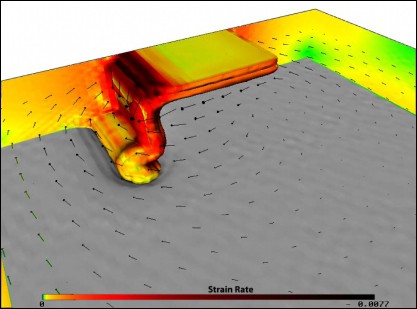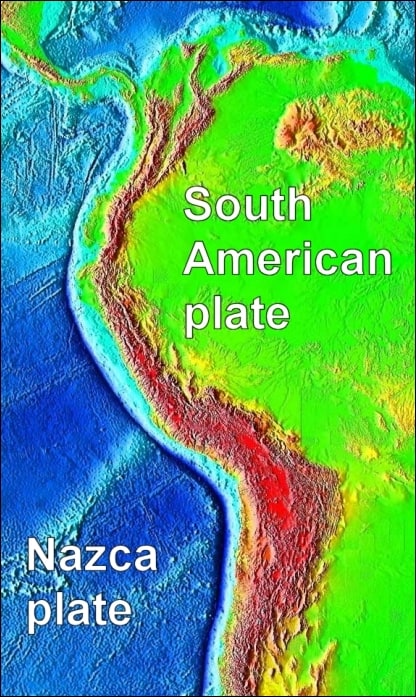Geophysicists in Australia think they may have solved the long-standing enigma of how the Andes mountain range was formed. Using computer simulations that model the fluid dynamics and mechanics of tectonic plates, they reckon that the Andes were formed when one tectonic plate in the Pacific slides or "subducts" under a neighbouring plate beneath South America in an uneven fashion. The existence of the Andes has baffled researchers because most other large mountain ranges, such as the Himalayas, have emerged where two plates collide head-on (Nature 446 308).

All tectonic activity on Earth is driven by subduction zones, where one plate is sucked underneath another into the Earth’s mantle. Now, for the first time, a team led by Wouter Schellart at the Australian National University in Canberra has created the first genuine 3D model of how plates move at subduction zones over time.
The model uses fluid dynamics and solid mechanics techniques to extrapolate modern data from dynamic, seismic and chemical studies as far back as 40 million years. This enabled the geophysicists to see how the lateral width of tectonic plates – in other words, their span across the Earth’s surface – affects the shape and movement of their subduction zones.
Schellart’s team found that plate width controls two fundamental features of subduction zones: the curvature of the trench where two plates meet, and the zone’s tendency to “retreat” through erosion. The narrowest plates between 300 and 1,200 km have a concave geometry at the boundary, and retreat relatively fast. On the other hand, plates with widths greater than 4,000 km develop convex boundary geometry and retreat slowly. However, the geophysicists found that the subduction zones of the largest plates have central areas that actually advance – rather than retreat – over periods of 5 to 10 million years.
One of these advancing areas is a region near Bolivia, where the Nazca plate in the Pacific Ocean subducts under the South American plate. Using the model, Schellart’s team found that the region supports large compressive stresses, fuelled by the westward movement of the South American plate. This could provide an explanation for how the South American Andes began to form some 200 million years ago.




